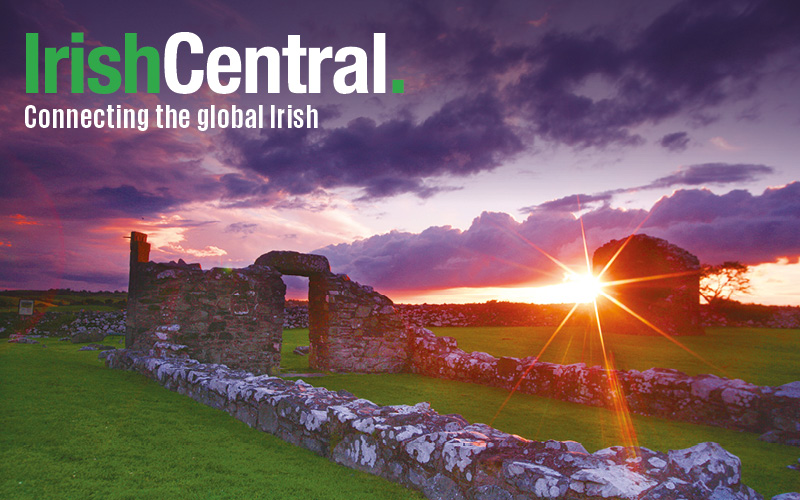As we speak, Brooklyn’s Coney Island is being sent back in time, transformed for the shooting of the movie "Brooklyn." The film is based on Colm Toibin’s touching novel about an Irish immigrant girl who falls in love with an Italian boy in 1950s Brooklyn, before feeling the pull of home at what can only be described as a very inconvenient time.
The release of a movie entitled "Brooklyn" is surely going to confuse at least some people, who might go to the theaters expecting to see a bunch of skateboards and skinny jeans, whispy beards and ironic t-shirts. The radical changes that have taken place in Brooklyn in recent years makes it easy to forget just what a unique – and thoroughly Irish – world Brooklyn once was and, to some degree, still is.
It can only be hoped that the release of "Brooklyn" – which fittingly enough stars Irish actress Saoirse Ronan – reminds people that Brooklyn wasn’t always so chic and cool.
“The Irish have shaped Brooklyn from its very core,” notes Eamon Loingsigh, who just published an excellent, deeply authentic novel of gritty Irish Brooklyn entitled "The Light of the Diddicoy."
Set amongst the laborers and gangs of the Irish-controlled waterfront, "The Light of the Diddicoy" vividly reminds us of how the Irish shaped Brooklyn and vice versa.
“In Manhattan, people are trying to ‘make it,’ become rich or famous any way they can,” Loingsigh notes.
“Manhattan is still so different than what happens across the East River. Brooklyn's personality is still that of a working class, tough-minded, family-oriented community with a strong work ethic where immigrants can still go and find urban working class jobs such as construction, work for the MTA or the city, Port Authority… in America and elsewhere, the Irish often didn't dream of becoming rich and powerful and gave Brooklyn, and America by extension, that gritty, strong work ethic needed to build the most powerful city in the world and also, the most powerful country in the world.”
Part of the problem, of course, is that such working- and middle-class strivers are generally not the stuff of hip TV shows, such as, say, Lena Dunham’s "Girls."
But to this day, vast swaths of Brooklyn from Bay Ridge to Marine Park remain popular with Irish Americans, whose grandparents and great-grandparents arrived a century earlier.
“My grandmother Mary Regina Lynch nee Sullivan was born [in Brooklyn] in 1917 and always spoke about the working class tenement neighborhoods she lived in as a young girl,” notes Loingsigh.
“Her favorite book was "A Tree Grows in Brooklyn." She was the first one to ever mention to me while I was still quite young that there once was a place called ‘Irishtown’ in Brooklyn. It took me a long time for my deep interest to set in, but when it did I haven't stopped searching for information about it since. Irishtown was a place my grandmother lived and where her father worked.”
Loingsigh’s research suggests that the Irishtown he heard about from his family was roughly located between the Brooklyn Navy Yard and the Manhattan Bridge, portions of which are currently known as Vinegar Hill.
“Similar to Manhattan's Five Points,” Loingsigh says, “Irishtown had many thousands of Irish-born that emigrated during the Great Hunger, but the main difference was that in Irishtown no one talked, and they were very protective of allowing their secrets to leave their neighborhood, which explains why everyone knows about Five Points, yet no one knows much of anything about Irishtown.”
Just as the movie "Brooklyn" will remind folks that Brooklyn wasn’t always about HBO hipsters, Loingsigh hopes "The Light of the Diddicoy" (the first of a planned trilogy) sheds light on Irishtown and the broader impact the Irish had on Brooklyn.
“There have been many, many stories about the Irish in New York, but I'm not so sure the ethnic story of the Irish in New York has been portrayed. One of the biggest reasons why is because of the powerful subjugation and oppression of Irish cultural traits in America,” says Loingsigh.
“Many Americans are spoon-fed the green beer and leprechaun myth and seem happy enough to parade around once a year soused to the gills while the real Irish cultural traits are almost wholly unknown.”
As Brooklyn continues to change radically, grasping its real – and its Irish – past becomes only more important.
(Contact “Sidewalks” at tdeignan.blogspot.com)




Comments